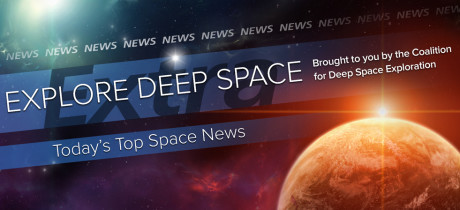In Today’s Deep Space Extra… National Space Council Executive Director Scott Pace explains why it’s time for a space policy approach that addresses U.S. interests and enables work with growing numbers of space faring nations and companies. Millions add their names to next NASA Mars lander mission.
Human Space Exploration
Q&A: Plotting U.S. space policy with White House Adviser Scott Pace
Scientific American (11/6): Scott Pace, Executive Director of the recently re-established National Space Council, explains why the moon appears to be an affordable next destination for human explorers, with Mars to come in the future. Pace also explains the value of NASA’s Space Launch System as a national asset, likening it to an aircraft carrier developed to enable government missions in a global arena.
Space Science
NASA says more than 2.4M people signed up to send their names to Mars
U.S. News and World Report (11/6): NASA’s Jet Propulsion Laboratory gathered the names of people whose signatures will accompany the Mars InSight lander to the red planet. Launch is planned for May. InSight was developed to study the Martian interior with a drill and by recording seismic activity. Launch is set for May 2018.
New study says Enceladus had an international ocean for billions of years
Universe Today (11/6): Findings from the long running, NASA led Cassini mission at Saturn suggests the geothermally active moon Enceladus may have hosted a large ice covered ocean, a potentially habitable environment, for perhaps billions of years. The study, Powering prolonged hydrothermal activity inside Enceladus, was published recently in the journal Nature Astronomy.
A galaxy almost as old as the Big Bang itself was just discovered
USA Today (11/6): Scientists have spotted a galaxy that formed within the first billion years of the 13.7 billion year old big bang event. G 0983808, the second oldest celestial object ever discovered, was observed with the Large Millimeter Telescope in Mexico, according to an account of the find published in the journal Nature Astronomy.
‘Making Contact’ profiles pioneering alien hunter Jill Tarter
Space.com (11/6): Making Contact, a new book by biographer Sarah Scoles, tells the story of pioneering SETI astronomer Jill Tarter, who has nurtured the search for intelligent alien civilizations through radio astronomy. Tarter was the inspiration for the character Errie Arroway in the feature film Contact based on the novel by the late planetary scientist and astronomer Carl Sagan.
Other News
European Space Agency (11/6): The European Space Agency has formed an international group to monitor China’s Tiangong-1 space station, which has been without crew since 2013. The nearly 18,000 pound orbital habitat is expected to make an uncontrolled re-entry into the Earth’s atmosphere early next year. The European led Inter Agency Space Debris Coordination Committee includes NASA representation.
Battery change-out delays weather satellite launch from California
Coalition Member in the News (United Launch Alliance)
Spaceflightnow.com (11/6): United Launch Alliance, the launch services provider, Monday announced a delay in the planned launching of the NASA/NOAA Joint Polar Satellite System-1 satellite from Vandenberg Air Force Base, from November 10 to no earlier than November 14 at 4:47 a.m., ET. The delay will permit a change out of the battery aboard the Delta 2 rocket. The spacecraft is part of an emerging polar orbiting satellite system that will work with geostationary weather satellite to improve long range forecasting of major weather events, such as hurricanes and floods.

